-
1 of 253523 objects
Octagonal bowl on a stand c. 1915
Enamel, wood, copper | 11.7 x 22.7 x 22.7 cm (whole object) | RCIN 41530
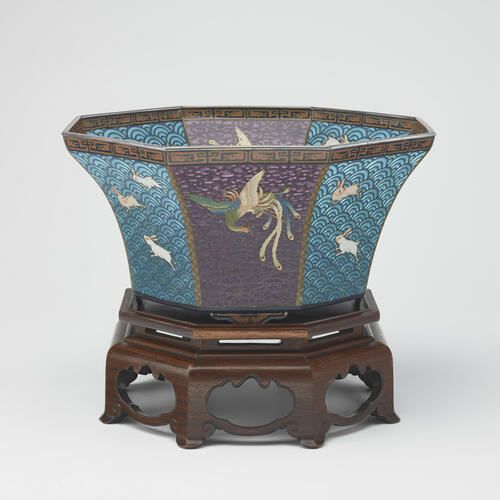
Ando Jubei (1876-1953)
Octagonal bowl on a stand c. 1915
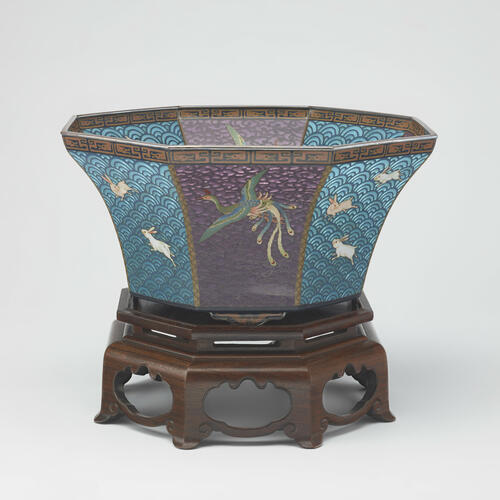
Ando Jubei (1876-1953)
Octagonal bowl on a stand c. 1915
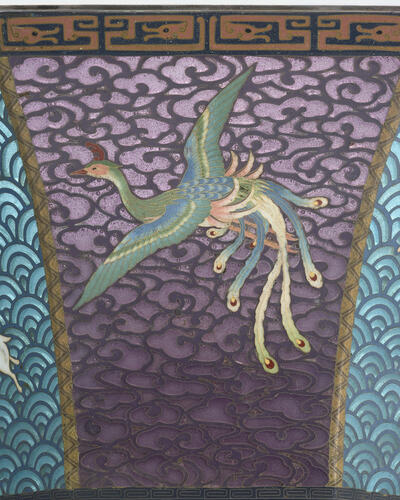
Ando Jubei (1876-1953)
Octagonal bowl on a stand c. 1915
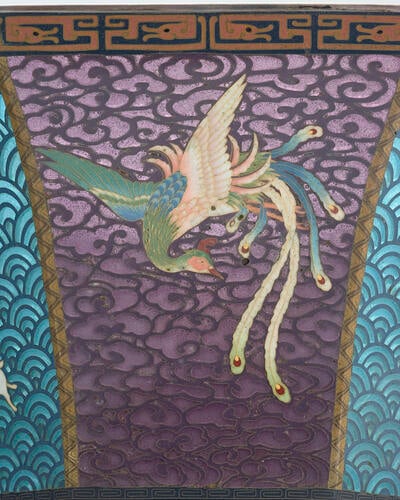
Ando Jubei (1876-1953)
Octagonal bowl on a stand c. 1915
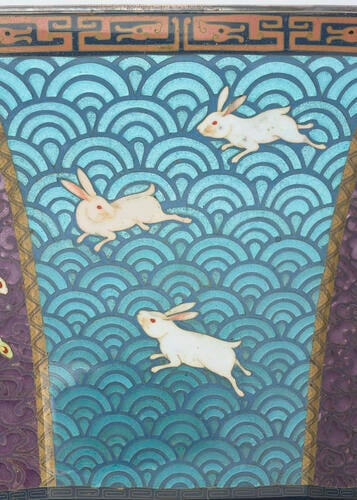
Ando Jubei (1876-1953)
Octagonal bowl on a stand c. 1915





-
Nagoya and the surrounding area was the major centre of cloisonné manufacture in Japan during the Meiji period. The most influential, innovative and productive of the many companies there was the Andō Company, founded in 1880 by Maeda Matsukichi and later run by Andō Jūbei (1876–1953). The firm won numerous prizes at world exhibitions, including the 1893 World’s Columbian Exposition in Chicago. In the early 1900s, the Andō Company began producing enamels using a technique called shōtai-shippō, generally known by its French name, plique-à-jour (‘open to light’). Andō Jūbei had seen examples of this technique at the Paris Exposition of 1900 and brought a piece by Fernand Thesmar back to Japan. This was analysed by Kawade Shibatarō (1856–1921), Andō’s chief foreman, who had introduced and developed the many technical innovations on which the Andō Company’s success was based, and who then developed and perfected this technique.
In shōtai-shippō, an object is prepared as for cloisonné enamelling but, crucially, the interior is not enamelled. Once the piece has been completed, clear lacquer is applied to its polished exterior to protect it from the acid that is then used to dissolve the copper body. The result is an object consisting of semi-transparent panels of enamel held together by a pattern of fine wires. The popularity of shōtai-shippō led many other manufacturers to adopt this technique.
Around 1900, the Andō Company was appointed official supplier of cloisonné to the Imperial Household Agency. Although none of Andō’s employees was ever given the title of ‘Imperial Craftsman’, the firm became the main provider of high-quality enamels for imperial gifts. These presentation pieces were often given by the emperor or empress to important individuals and dignitaries on special occasions. This octagonal bowl is decorated with phoenixes in flight on a background of stylised clouds, rabbits on stylised waves (seigaiha) and a stylised angular dragon motif around the rim.
Text adapted from Japan: Courts and Culture (2020)Provenance
Probably acquired by King Edward VIII when Prince of Wales in Japan, 1922, and subsequently sent by him to Osborne House.
Probably the 'JAPANESE OCTAGONAL-SHAPED VASE, of pale-blue glass, on wooden stand' recorded in the Eastern Durbar Corridor at Osborne, 1933 (OS 1933, no. 90, p.34). -
Creator(s)
(enameller)Acquirer(s)
-
Medium and techniques
Enamel, wood, copper
Measurements
11.7 x 22.7 x 22.7 cm (whole object)
6.8 x 20.5 x 20.5 cm (stand)
Category